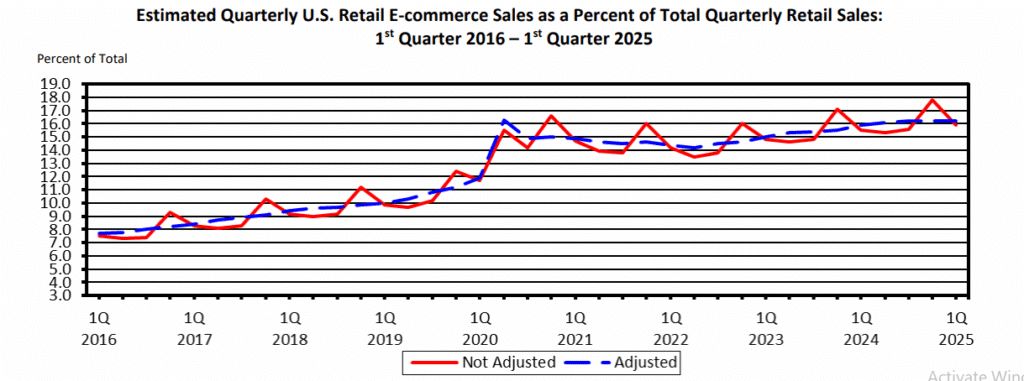How Order Orchestration Simplifies Multi-Channel Sales

Order orchestration automates and optimizes fulfillment decisions across warehouses, stores, and vendors, reducing errors and manual work. It enables confident scaling across channels, unifying inventory and order workflows for seamless, intelligent retail operations.
Shopify’s native tools support multi-location fulfillment, but lack the real-time logic needed to handle complex, high-volume operations at scale.
Common signs you need orchestration include overselling, stockouts, manual order routing, and fulfillment delays across multiple locations.
Scaling your Shopify storefront into a multi-channel powerhouse—across online stores, marketplaces, social commerce, and brick-and-mortar locations—is a huge achievement. But with greater reach comes greater complexity. As orders pour in from multiple channels, how do you ensure they’re processed quickly, accurately, and profitably?
With the help of order orchestration, you can ensure that every item is in the right place, at the right time, at the right price. It’s the connective tissue that links inventory allocation, order capture, and fulfillment across your sales channels, helping you process orders seamlessly across multiple locations.
Without an organized and smart orchestration, even the most sophisticated retail team can find themselves stuck in a maze of:
- Manual order routing that burns time and causes human error
- Overselling or stockouts due to poor inventory management
- Delayed deliveries that erode customer satisfaction and increase support volume
According to recent figures from the U.S. Census Bureau, e-commerce sales reached $300.2 billion in Q1 2025, accounting for 16.2% of total retail sales. That’s a 6.1% increase over the previous year, reflecting the accelerating shift toward digital and omnichannel commerce and the growing need for a scalable order management tool that can help you keep up with the rising demand.

Source: U.S. Census Bureau
In this article, we’ll review what order orchestration means in a multi-channel context, the common challenges it solves for growing Shopify retailers, and how it can enhance your Shopify ecosystem.
The challenges of multi-channel fulfillment for Shopify retailers
Shopify does a great job enabling you to expand across multiple locations and sales channels. With built-in support for multi-location fulfillment, it provides the foundation to serve your customers from stores, warehouses, and even third-party vendors.
However, when the volume rises and complexity builds, such as same-day delivery, BOPIS, and nationwide inventory pools, Shopify on its own can’t manage the orchestration logic required to run it all efficiently.
That’s where you’ll watch your teams undergo operational strain, encountering common fulfillment roadblocks like:
- Manual order routing: Fulfillment teams manually decide how to assign and process customer orders, one by one. It’s time-consuming and prone to error.
- Fragmented inventory views: There’s no unified picture of inventory management across stores, distribution centers, and dropshippers, making it challenging to optimize stock availability.
- Missed delivery promises: Without intelligent routing logic, orders aren’t always shipped from the closest or most cost-effective location, leading to customer frustration and increased fulfillment costs.
- Poor store execution: Offering BOPIS and ship-from-store sounds great, until your stores are expected to handle fulfillment without the tools built for managing orders in real time.
- No prioritization logic: There’s no way to configure predefined business rules, such as shipping clearance inventory first or protecting margins by fulfilling certain products from DCs.
As you scale your business with Shopify, these orchestration challenges tend to creep in quietly until they start impacting your business’s bottom line.
By introducing a layer of automation, real-time decision making, and operational efficiency, orchestration bridges the gap between Shopify’s multi-location capabilities and the dynamic needs of modern commerce.
What is order orchestration?
Order orchestration refers to the automated, rules-based process of determining the most efficient way to fulfill customer orders across your network, including multiple warehouses, stores, and third-party providers.
In simple terms, it’s the invisible logic that connects your order management system to real-world inventory, fulfillment costs, and customer expectations—all while keeping things moving fast, accurately, and at a scale.
Here are some key components of a modern order orchestration process:
- Inventory visibility: Real-time insight into stock levels across multiple locations, like DCs, physical stores, and dropshipping partners. This prevents overselling and supports reliable inventory allocation.
- Fulfillment decision-making: Automated logic that uses predefined business rules (e.g., prioritize the closest store, protect margins, or reduce shipping costs) to assign orders to the optimal node. This removes guesswork from the order process.
- Exception handling: Built-in fallback workflows when inventory is unavailable or a location hits capacity. For example, if one store can’t fulfill an item, the system automatically reroutes the order to the next-best option, helping prevent delays and keep the fulfillment process seamless.
- Multi-node coordination: Ensures that all fulfillment sources, such as in-store locations, distribution centers, or vendors, operate as a unified system, rather than disconnected silos. This kind of orchestration enables true multi-channel fulfillment.
- Service-level optimization: Chooses fulfillment paths based on variables like costs, delivery windows, special handling needs, or customer location. This directly impacts customer satisfaction by supporting fast delivery and accurate timelines.
A study by APQC found that companies automating their sales order workflows experienced a 46% reduction in order cycle times, resulting in significant gains in accuracy and operational efficiency. This led to fewer errors, faster order tracking and processing, and a more efficient order fulfillment process.

Source: APQC Survey
How order orchestration enhances Shopify
Shopify’s native ability to support multiple locations and multichannel fulfillment provides an excellent foundation for scaling.
However, when the fulfillment becomes more complex, involving split shipments, same-day delivery, or order thresholds tied to margin protection, Shopify’s system on its own can’t handle that level of real-time logic.
Comprehensive order orchestration capabilities can enhance and extend the capabilities of your Shopify ecosystem by adding a layer of intelligence to automate decision-making and boost fulfillment performance.
Here’s what orchestration can add to your Shopify ecosystem:
- Dynamic order routing: Automatically routes orders based on real-time inventory visibility, customer proximity, fulfillment costs, and your unique business rules.
- Centralized control: One place to define and manage assignment and visibility preferences across all channels, warehouses, and store locations, no more fragmented logic.
- Smarter store fulfillment: Empowers your store to operate as local fulfillment hubs for BOPIS and ship-from-store using intelligent routing logic and inventory management.
- Minimizing errors: Automate decisions that would otherwise slow your operations team down in the order management process.
- Improved customer experience: More accurate fulfillment and fewer cancellations or backorders mean happier customers, better reviews, and enhanced customer satisfaction.
The business impact of intelligent order orchestration
When you’re running a high-volume, multi-channel operation on Shopify, even minor delays in the order fulfillment process can ripple into lost revenue, damaged trust, and exhausted ops teams.
Order orchestration delivers real-world outcomes that directly impact performance, margin, and customer loyalty.
Here’s what a layer of smart order orchestration can unlock:
- Faster fulfillment: Automatically route orders to the fastest, most cost-effective location, whether that’s a DC, store, or vendor, so you can meet same-day or next-day delivery expectations without scrambling.
- Lower shipping costs: Reduce split shipments and unnecessary cross-country freight by fulfilling smarter. Strategic inventory allocation and routing logic help reduce shipping costs and protect profit margins.
- Higher inventory efficiency: Real-time inventory management across channels helps avoid both overstocking and stockouts, boosting availability without waste.
- Reduced returns: Fewer mistakes in order capture and fulfillment mean fewer returns. Orders are processed accurately, leading to higher customer satisfaction and lower reverse logistics costs.
- Less ops burnout: Intelligent automation reduces the number of tasks your teams need to handle manually, such as selecting fulfillment nodes or checking stock across multiple channels.
- More sales opportunities: Confidently sell from stores and third-party vendors without fear of stock errors or delayed fulfillment, unlocking more ways to meet demand without chaos.
Fulfillment costs can consume anywhere from 12% to 20% of e-commerce revenues, putting pressure on profit margins and making it harder for you to operate efficiently at scale.
Signs it’s time to implement order orchestration
As a growing Shopify retailer, it can be challenging to pinpoint when your current approach to order management has reached its limit. Here are some tell-tale signs that you should consider for order orchestration:
- You’re fulfilling more than one location, making order assignment increasingly complex.
- You offer, or plan to offer, BOPIS (buy online, pick up in-store) or ship-from-store services and need a more innovative way to.
- Your team is manually assigning orders to fulfillment locations, which introduces delays and increases the risk of errors.
- You’re experiencing stockouts or overselling due to fragmented inventory management across channels.
- You’re seeing an increase in support tickets related to missed deliveries, delays, or incorrect shipments, which are impacting customer satisfaction and loyalty.
- You’re selling across multiple Shopify stores, channels, or regions and relying on manual workarounds that struggle to keep up.
If you’ve experienced any similar situations, it’s a clear indicator that your business has outgrown basic multi-location order fulfillment and needs an intelligent order orchestration process in place.
By adding a layer of automation and business rules to your entire order lifecycle, you can save time, reduce errors, and build the operational resilience required to scale efficiently, both within and beyond your Shopify ecosystem.
The backbone of modern multi-channel retail
To stay competitive in an ever-evolving and dynamic market, you need an intelligent order orchestration to connect the dots between different sales channels, inventory management, and order fulfillment.
Modern order orchestration processes can help you:
- Automate fulfillment decisions: Route customer orders to the best location in real-time, based on business rules like cost, proximity, and available inventory.
- Reduce complexity: Eliminate manual handoffs and fragmented order management by creating a single, intelligent workflow that spans multiple warehouses and stores.
- Deliver a better customer experience: Minimize delays, prevent delays caused by stockouts or misrouted shipments, and create seamless fulfillment that delivers and exceeds customer expectations.
- Scale confidently across every channel: From a single location to multiple sites, order orchestration provides the resilience and precision needed to grow, adapt, and launch new sales or fulfillment methods.
Want to see how fabric can help you orchestrate smarter fulfillment? Contact us and learn more about our AI-powered OMS.

Digital content editorial team @ fabric




